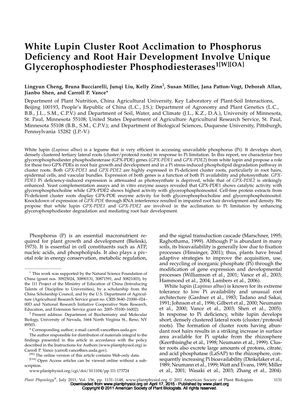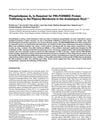White Lupin Cluster Root Acclimation to Phosphorus Deficiency and Root Hair Development Involve Unique Glycerophosphodiester Phosphodiesterases
April 2011
in “
Plant physiology
”

TLDR White lupin uses specific genes to grow root hairs and access phosphorus when it's scarce.
White lupin (Lupinus albus) efficiently accesses unavailable phosphorus (Pi) by developing cluster roots in response to Pi limitation. This study characterized two glycerophosphodiester phosphodiesterase genes (GPX-PDE1 and GPX-PDE2) and proposed their roles in root hair growth and a Pi stress-induced phospholipid degradation pathway. Both genes were highly expressed in Pi-deficient cluster roots, particularly in root hairs, epidermal cells, and vascular bundles, with expression influenced by Pi availability and photosynthate. GPX-PDE1 showed catalytic activity with glycerophosphocholine, while GPX-PDE2 was most active with glycerophosphoinositol. Knockdown of these genes impaired root hair development, suggesting their involvement in Pi limitation acclimation by enhancing glycerophosphodiester degradation and mediating root hair development.


